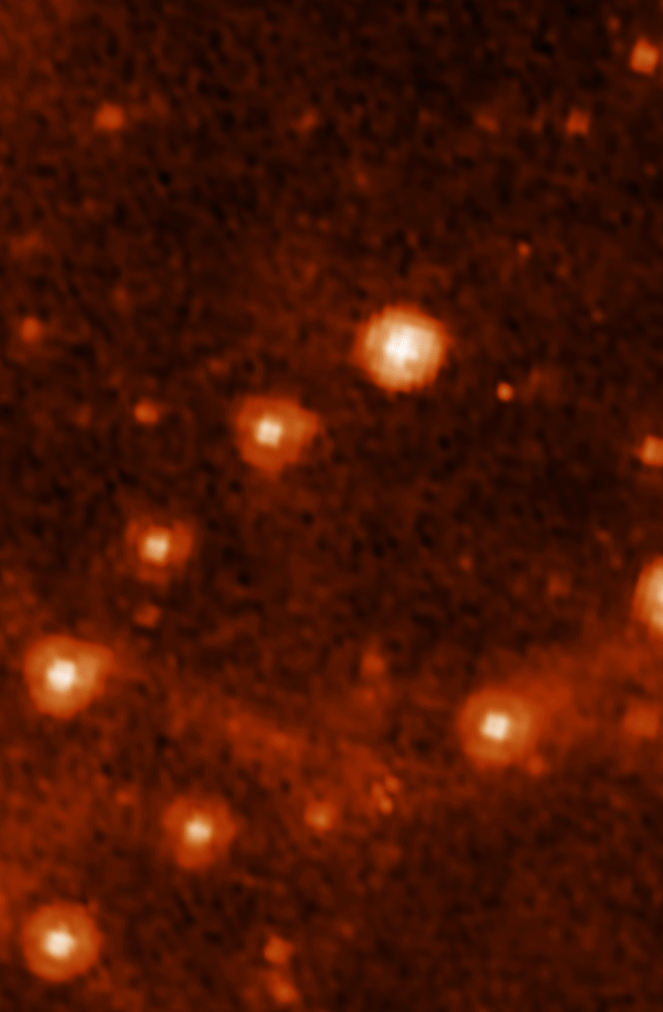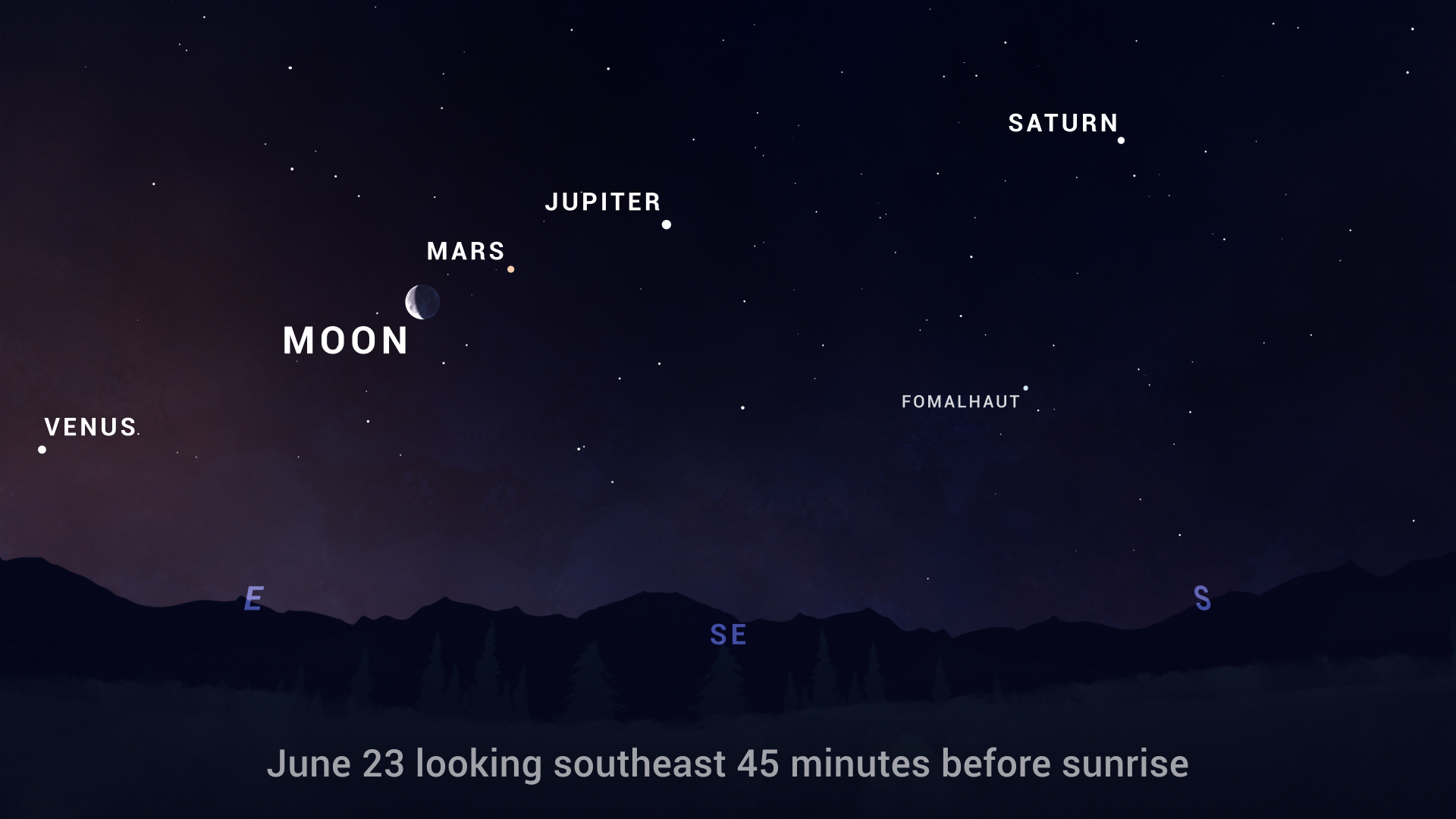
This Week in Space: New Maps of 16 Psyche and the Milky Way Light Up the Sky
Hello, readers, and happy Friday! This week we’ve got some great news concerning maps and asteroids, along with updates from the world’s major space agencies. James Webb has finally powered on all its instruments. And it seems like NASA’s Lucy spacecraft has nine lives! We’ll wrap up with skywatching opportunities for the week, as five celestial bodies come into graceful alignment.
Gaia Project Releases Biggest, Most Detailed Sky Map Ever
After weeks of suspense, the European Space Agency’s Gaia project has released its gigantic new sky map. It’s the biggest, most complete, most detailed multi-dimensional map of the Milky Way .
These four sky maps represent what Gaia sees. They also demonstrate the four key types of measurements that Gaia performs. From top: a) radial velocity, b) radial velocity and proper motion, c) interstellar dust, and d) chemical composition. Image: ESA/Gaia/DPAC; ,
The 3D map is a rich data-set on nearly two billion stars, and other objects within the Milky Way. During its survey, the space telescope captured pictures of three million other galaxies. But it turns out that Gaia can also image quasars and AGNs. The space telescope can even detect “starquakes” — tiny disturbances on the surface of stars. Since the Gaia project scientists released this data for public use, expect more such revelations in the coming months.
Psyche Finally Shows Its Face
While Gaia was mapping the Milky Way, a team of astronomers have produced the most detailed map to date of the surface of a single asteroid: 16-Psyche. Scientists believe the asteroid could hold clues to how our planets came to be.
According to the report accompanying the map, 16-Psyche has a highly varied surface of metal, sand, and rock. This surface terrain suggests that the asteroid’s history could include impacts and eruptions. is the namesake and destination of NASA’s Psyche mission, slated to launch later this year.
NASA adds Ninth Asteroid to Lucy Mission
Asteroid enthusiasts may be pleased to know that NASA has added a ninth asteroid to the Lucy mission’s itinerary. Earlier in the year, we reported that all was not well with the Lucy spacecraft. Part of its power array kept stubbornly refusing to deploy. At the time, mission scientists suspected that a load-bearing cable had come unspooled, preventing the solar panels from opening. But it seems that the legendary ingenuity of NASA engineers has come through once again. Over the course of several interventions by mission scientists, Lucy has managed to unfurl that second solar panel about 96%. Now, the solar array is delivering about 90% of its ordained 18 kilowatts.
Artist’s illustration of the final phase of deploying the solar arrays on NASA’s Lucy spacecraft. Credit: NASA
With this much power at its disposal, mission scientists are that Lucy can complete its mission. In fact, the spacecraft is doing well enough that its science team is sending it on a scenic detour. One of Lucy’s observation targets is a Trojan asteroid called Polymele. But it turns out Polymele has a partner: the asteroid appears to have a 5-km satellite of its own. For the moment, Lucy’s science team has dubbed the new space rock “Shaun,” after Shaun the Sheep from “Wallace and Gromit.” So, if all goes well, Lucy will pay Shaun a visit in 2027.
James Webb Space Telescope Finally Comes Online
As of June 15, all of Webb’s instruments are powered on and snapping their first images. And we don’t have long to wait before Webb is fully open for business. On July 12, NASA plans to release a “suite of teaser observations” that illustrate Webb’s capabilities. Marcia Ricke, an astronomer at the University of Arizona who operates one of Webb’s four cameras, said , “These will show the beauty of Webb imagery and also give astronomers a real taste of the quality of data they will receive.”

This image shows a resolution comparison between the Spitzer telescope and the James Webb Space Telescope. Webb is a smidge better.
After July 12, the James Webb Space Telescope can finally start doing science full-time. We don’t yet have a detailed schedule for the next year, but the telescope is booked solid for the whole thing. In the blog post, Ricke added, “Astronomers across the world are eagerly waiting to get the first data back from the most powerful space telescope ever built.”
NASA, ESA Join Forces to Reach For the Moon
NASA and ESA (the European Space Agency) are moving to further strengthen their transatlantic ties. Wednesday, NASA and ESA officials signed an agreement that NASA will provide a launch vehicle for the Lunar Pathfinder satellite. In a press conference, NASA confirmed that the exchange will take place through its Commercial Lunar Payload Services (CLPS). Poetically, ESA calls their concept for a future lunar communications and navigation/GPS network “Moonlight.”
The two agencies are already partners on the Artemis lunar program. Europe is supplying power and propulsion for NASA’s crewed Orion spacecraft, meant to move astronauts between Earth and the moon. ESA will also contribute a module and refueling technology to NASA’s Gateway, a “mini-space station” destined for lunar orbit. The agencies are also in talks concerning a large new cargo lander, to get supplies from lunar orbit to a future Moon base.
NASA’s Space Launch System (SLS) rocket with the Orion spacecraft aboard is seen atop a mobile launcher at Launch Complex 39B, Monday, April 4, 2022. Photo Credit: (NASA/Joel Kowsky)
While Russian antagonism has driven the world’s space agencies toward displays of capitalist solidarity, Artemis continues to run NASA’s gauntlet of “shake, rattle and roll” safety tests. The ship has a “” rehearsal on Saturday. In a recent briefing on Artemis safety tests, Artemis spokesperson Lisa Bates explained to ExtremeTech that the spacecraft’s design includes a kind of omni-box, a black box containing a model for every other spacecraft NASA has ever fielded. Talk about making a list and checking it twice. If there’s a failure mode that’s physically possible, the Artemis team is damn well determined to find it. (Such diligent; very cooperate. Much business. Space!)
And now my favorite part…
Skywatchers Corner
June is strawberry season! This week’s spectacular full moon, the Strawberry Moon, seems like a tough act to follow. But there’s been a lovely and auspicious gathering of several naked-eye planets building for weeks now, and next week it’ll really steal the spotlight. We haven’t seen planets come into alignment like this for nearly twenty years. Venus, Mars, Jupiter and Saturn have danced in and out of conjunction in the pre-dawn sky as this summer came into full bloom. Now the moon is preparing to join them as they trail out along the orbital plane.

In this case, it’s actually nice that the moon will be in its waning crescent phase. Moonlight from a full moon could wash out the planets in the lightening sky. However, a cooperative crescent moon will drift into alignment shortly before sunrise on June 23. It will fall between Venus and Mars. To catch this uncommon alignment of five celestial bodies, look to the southeast, about 45 minutes before sunrise.
That’s all for now, my friends, but we’ll be back on Friday to tell you all about what happened this week in space.
Now Read: